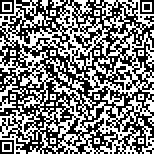下载中心
优秀审稿专家
优秀论文
相关链接
摘要

植被的结构参数如植被高度、生物量、水平和垂直分布等,是影响陆地与大气能量交换乃至生物圈多样性的重要因素。多数遥感系统虽然可以提供植被水平结构的图像,但是不能提供植被成分垂直分布的信息。大尺度激光雷达仪器如LVIS产生的激光雷达信号,已成功地用于估计树高和森林生物量,然而大多数激光雷达仪器不具备图像能力,只能提供一个区域内的采样数据。其他的遥感数据如多角度高光谱、多频率多时相辐射计或雷达数据,可根据GLAS(Geoscience Laser Altimeter System)采样的测量用来推断出连续的森林结构区域覆盖参数。\r\nMISR(Multi-angle Imaging Spectrometer)对陆表多角度的成像能力,可以通过BRDF的各向异性提供植被的结构信息。结合激光雷达的垂直采样和MISR的图像,区域内乃至全球性的森林空间参数的成像是可能的。ICESat卫星上的GLAS数据、Terra卫星上的MISR数据为区域或全球性森林结构参数提供了可能。本文的研究目的是评估GLAS数据,分析类似于MISR的数据对森林结构参数的估计能力。本文中使用了LVIS、AirMISR和GLAS数据。通过对GLAS树高的测量与GLAS像元内来自LVIS的平均树高对比,发现它们是高度相关的。同时还探讨了多角度频谱成像仪数据预测树高信息的能力,这将在今后区域内森林结构参数映射加以研究。
Vegetation spatial structure including plant height,biomass,vertical and horizontal heterogeneity,is an important factor influencing the exchanges of matter and energy between the landscape and atmosphere,and the biodiversity of ecosystems.Most remote sensing systems,although providing images of the horizontal organization of canopies,do not provide direct information on the vertical distribution of canopy elements.The lidar waveform signature from a large-footprint lidar instrument,such as the Laser Vegetation Imaging Sensor(LVIS) has been successfully used to estimate the tree height and forest above-ground biomass.But the most lidar instruments do not have the mapping capability,and provide only sample data in a region.Other remote sensing data,such as a multi-angle spectral,a hyper-spectral,a temporal spectral radiometer,or radar data,will be needed to extrapolate the GLAS sample measurements into continuous regional coverage for forest structure parameters.The ability to image the surface through various angles by the Multi-angle Imaging Spectrometer(MISR) instrument provides canopy structure information through the anisotropy of the BRDF.Combining the vertical sampling of lidar with MISR's mapping capability provides a possibility of mapping forest spatial parameters in regional,even global scales.The data from the Geoscience Laser Altimeter System(GLAS) on ICESat,and data from MISR on Terra are potential dataset for regional or global forest structure parameter mapping.The objectives of this study are to evaluate the GLAS data and to investigate the ability of MISR-like data for forest structural parameter estimation.The LVIS,AirMISR,and GLAS data were used in this study.The comparisons between GLAS tree height measurement and the average tree height from LVIS within the GLAS footprint show the high correlations.The study also shows the capability of multi-angle imaging spectrometer data to predict tree height information,which will be further explored for regional forest structural parameters mapping.

